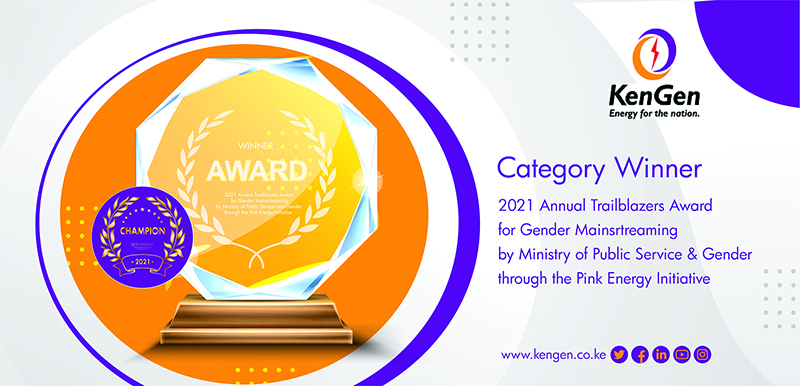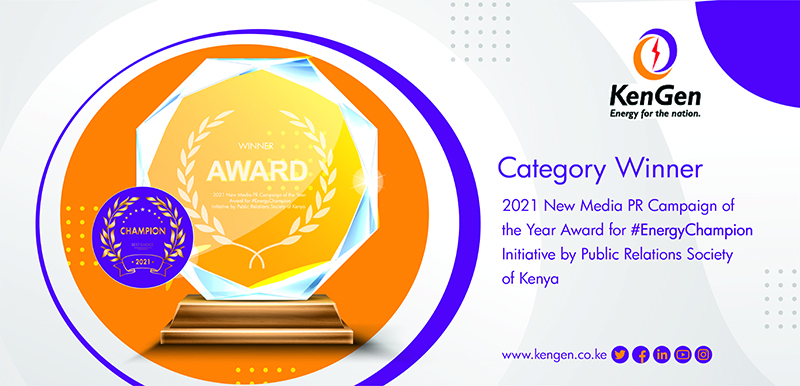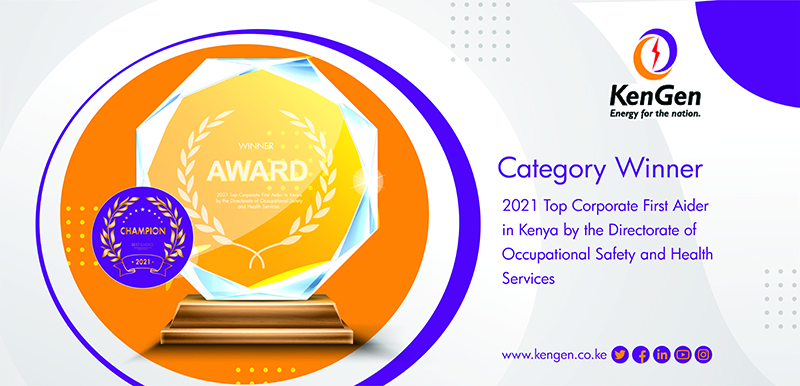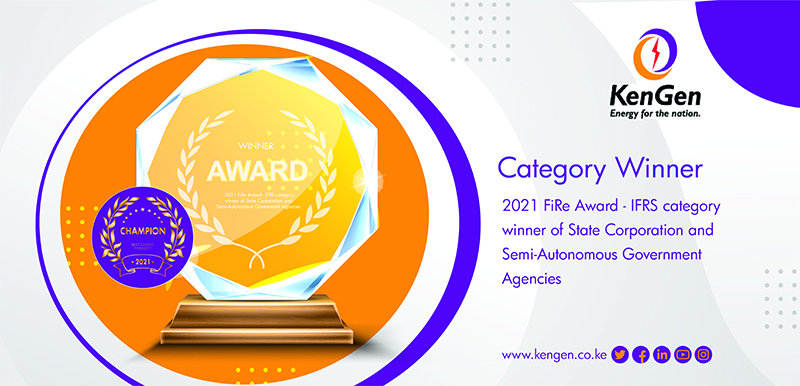It is that time of the year when we all join family and friends in ushering the season of festive cheer. While merry-making is what characterizes the Christmas and New Year season, Christmas is also about spreading the festive cheer to the less fortunate and vulnerable in society.
Now, more than ever, this Christmas season calls on us to make a conscious effort in supporting those who are in need given the devastation COVID-19 has caused in our communities. As such, it is fitting that companies and individuals take time to extend acts of charity to those in need.
Corporate Social Investment (CSI) programmes is one of the channels through which corporate entities can give back to society this festive season. Kenya Electricity Generating Company (KenGen) has been doing this throughout the year by undertaking several CSI projects aimed at transforming the lives of communities living near its installations.
Through its philanthropic arm, the KenGen Foundation, KenGen has continued to steer the conversation around sustainable development through viable and successful CSI community programs. On the education front, the company has offered annual scholarships to bright and deserving students from disadvantaged communities neighbouring its power plants. Since 2005, KenGen’s Education Scholarship Programme has supported more than 900 students at different level of education.
Apart from this, KenGen has also supported the development of school infrastructure development with construction of classrooms, dining halls and laboratories; provision of furniture and educational materials.
Organizations can emulate KenGen’s CSI approach which takes a sustainable approach and ensures that the spirit of giving is not only seen during the festive season but is a continuous drive that is firmly entrenched in the organization’s day-to-day operations.
All said and done, these acts of charity are not limited to corporates only. As you consider what to do at an individual level to put a smile on someone’s face, here are some pointers to consider. First, consider sharing your material resources. You may consider donating foodstuff, cash or clothing to those in need.
Secondly, take some time to visit a Children’s Home or a home for the Elderly. This is one way to share the warmth of family with people that need to feel loves and cared for. This way, the true meaning of Christmas will be expressed in ways that make a lasting impression on the individuals and communities that you interact with.
END...//
Ring fencing of water resources: Why Tree Growing is Vital for Sustainability of Our Rivers and Dams
For decades, dams and rivers – small and big – have continued to provide immense benefits to humanity. From provision of water for domestic use to powering machines for electricity generation, these hydro resources remain vital to not only the existence of humanity, but also for economic development.
Whilst the benefits of rivers and dams remain clearly defined and known by many, the rising environmental challenges such as deforestation and climate change continue to pose a big threat not only to the water bodies but to companies like Kenya Electricity Generating Company PLC (KenGen) that operate its hydropower plants which rely heavily on rainfall.
Data from the United Nations indicates that 2019 was the second warmest year on record and the end of the warmest decade (2010- 2019) ever recorded. Although a lot of gains on climate change have been achieved during the COVID-19 pandemic period through reduction of carbon emissions especially by the suspension of world travels, more action is needed such as planting trees, particularly in water catchment areas.
Why is tree planting along the banks of rivers and dams vital? Here are some reasons:
1. Stabilisation of Rivers and Dam Banks
Tree planting is effective to stabilize banks as they help in stabilizing the soil around rivers, thereby increasing their lifespan and the benefits to agriculture and hydroelectric power generation.
As such, efforts by individuals and organisations towards tree growing for bank stabilisation ought to be accelerated. As part of corporate efforts to enhance sustainability our hydroelectric power generation in the financial year 2019/2020. KenGen, through its conservation efforts planted more than 2,500 trees, 25,600 sisals in upper Tana Region while in the full year 2020/2021 35,000 sisals and 8,000 indigenous trees were planted to ensure the dams are protected from erosion. In addition, through KenGen’s ambitious social afforestation programme a total 50,634 assorted seedlings were issued to communities for agroforestry and woodlots establishment on farms. This approach is instrumental in ensuring that the upper tana river catchments is conserved, thereby guaranteeing sustainability of energy generation operations. Grass seedlings, gabion installation and Bamboo establishment along riverbanks are some of the many initiatives the company has embraced as part of the bank stabilisation measures along river Mathioya catchment which has so far yielded good results
Currently, KenGen has accelerated environmental conservation across its hydropower stations namely: Turkwel, Sondu-Miriu, Sangoro, Mesco, Wanji, Gogo, Tana, Sagana, Masinga, Kamburu, Kindaruma, Gitaru and Kiambere.
2. Reduction of Soil Erosion
Erosion of rivers banks remain a major contributor to siltation of dams which ultimately reduces the storage capacity of reservoirs, thereby impacting negatively on power generation capacity not to mention their lifespan. Trees are effective in managing soil erosion as they assist to stabilize the soils, reduce the erosivity of the landscape and enhance percolation greatly reducing the silt load that find its way to the reservoirs. As part of the efforts to accelerate uptake of tree planting within the Upper Tana buffer communities, KenGen runs a dedicated tree nursery with an annual output of about 10,0000 seedlings that are given out for free.
In addition, KenGen has been able to achieve immense results through initiatives like the Green Initiative Challenge (GIC), which is an ambitious project implemented through the KenGen Foundation aiming to plant more than 300,000 trees in close to 1,000 schools in Kenya’s arid and semi-arid areas. The 10-year project, now in its fifth phase, further aims to plant more than 100,000 fruit seedlings. In its entirety, the project is expected to cover over 500 acres of land.
3. Carbon Sinks
Climate change remains among the major catastrophes facing humans. Climate change and its impacts have devasting effects on human population. Climate change mitigation is therefore the focus worldwide to slow the pace of devastating climate change impacts. Trees are significant carbon sinks and critical in offsetting our carbon footprint. Global warming has accelerated the situation because of its adverse effect on rivers and dams, thereby exacerbating the need for more trees in the ecosystem. This forms the basis for the call to accelerate reforestation.
The three reasons above are just among many others that can illustrate the importance of tree planting in safeguarding water bodies in addition to mitigating the adverse effects of climate change on the environment. Tree growing have other benefits like providing habitat for wildlife and enhancing the green economy. As such, if individuals and organisations accelerate their efforts in tree growing especially around water bodies and catchments, a lot of the environmental threats shall be kept at bay.
........................///........................
Page 6 of 9





